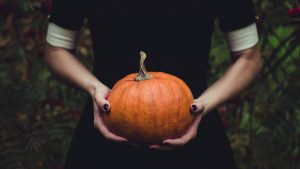From Samhain to Halloween – and back to Samhain again
Halloween is the so-called spookiest time of the year. It is the season of scary costumes, horror movies, ghost stories, and lots of candies. Where do these customs originate from?

According to the most prevalent beliefs, Halloween can be traced back to the Celtic festival of Samhain (pronounced as: sow-in). Traditionally held on October 31st from sundown to sunrise of the next day, Samhain marked the beginning of the Celtic new year. It was believed that the veil between the physical and spiritual worlds is the thinnest at this time of the year, therefore, the spirits could wander the human world. During the festival, the Celts dressed up in costumes to avoid evil spirits or lighted bonfires to scare them away. They also commemorated their ancestors by having feasts or by leaving various offerings on their gravesites. They believed that in exchange, those ancestors would help offering an insight into the future.
Today’s Halloween traditions have been largely influenced by the spread of Christianity. All Hallows’ Eve and All Saints’ Day replaced Samhain, but many of the activities were retained in one way or other. Instead of lighting bonfires, scary faces are carved into pumpkins and candles placed inside them, but some habits such as of donning various scary-looking costumes and having feasts have been also kept. Commemorating the dead also became an important part of Halloween habits, as the majority of people tend to visit gravesites of their relatives and leave candles and flowers to pay respect to them.
But what happened to Samhain then? Interestingly, it still exists, although in a somewhat different form. In recent decades, there has been a rise in the popularity of the so-called neopagan movements. People in these groups have taken an effort to preserve the beliefs and practices of pre-Christianity societies. Some groups, e.g. the Celtic Reconstructionists aim to preserve ancient Celtic traditions as accurately as possible, while others, such as Wiccans, follow a more eclectic approach in which they blend accuracy with a certain amount of modernity to create a more accessible experience. These groups celebrate Samhain similar to the way the Celts did it, which means lighting bonfires or having feasts to commemorate the dead, although they do it in a more lighthearted manner.
Halloween (or Samhain) is one of my favorite times of the year. It is the season of closure and self-reflection. Do you prefer to spend it with candies and horror movies or peaceful commemorations?
Photo: pixabay.com
